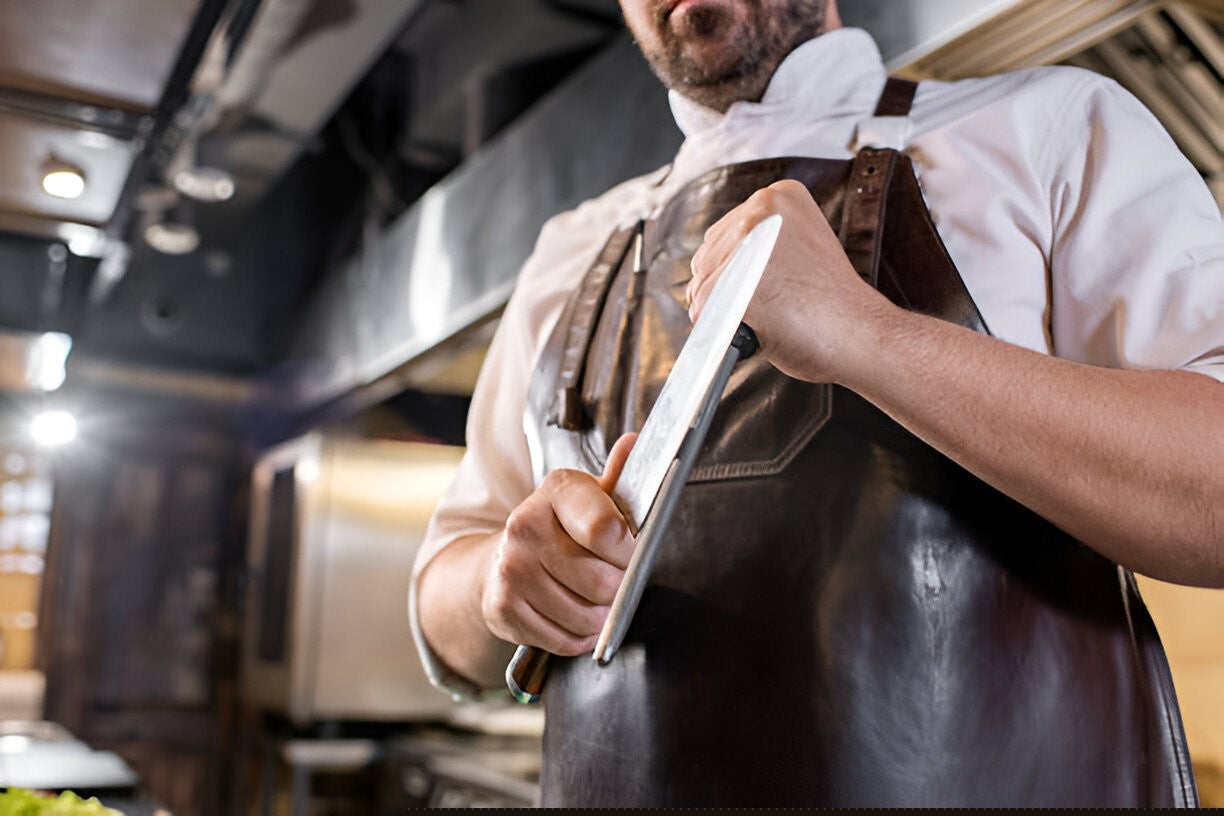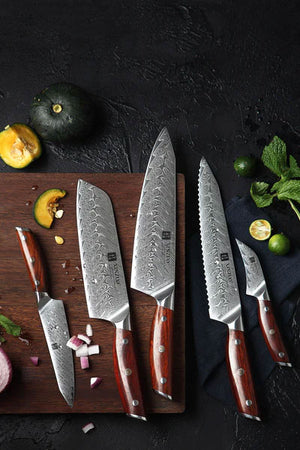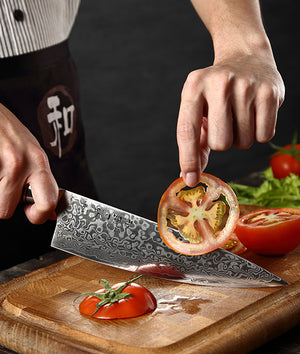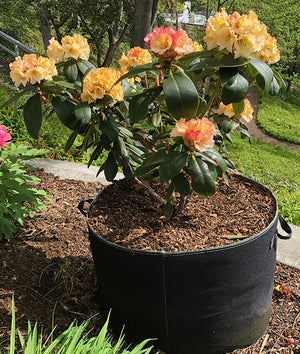
Honing Rod vs Sharpening Stone: What’s the Real Difference?
If you've ever struggled with a knife that squashes tomatoes instead of slicing through them, it’s time to take a closer look at your blade maintenance tools. While both honing rods and sharpening stones are used to care for knives, they serve very different purposes. Confusing the two can lead to damaged blades, unnecessary wear, and less-than-perfect food prep.
In this comprehensive guide, we’ll explore the key differences between a honing rod and a sharpening stone, how each works, and why every kitchen should have both. Plus, we’ll point you toward high-quality knife honing rods available right here at The Bamboo Guy.
What Is a Honing Rod?
A honing rod—also called a knife honing rod, knife sharpening rod, or knife hone rod—is an essential kitchen tool that helps keep your knife’s edge aligned. Over time, with regular use, your knife's edge becomes misaligned due to microscopic bends. While the blade may still be sharp, its cutting ability is diminished simply because it’s no longer straight.
That’s where a honing rod comes in.
How It Works
A knife honing rod works by gently pushing the edge of the blade back into alignment. It doesn’t shave or grind away any metal—instead, it realigns the edge to restore smooth slicing and cutting performance. This simple act can dramatically enhance the effectiveness of your knife, especially if done regularly.
Types of Honing Rods
There are several types of honing rods available:
- Stainless Steel Rods – Ideal for everyday maintenance and durability.
- Ceramic Honing Rods – Slightly abrasive; useful for a light touch-up.
- Diamond-Coated Rods – Combine honing with very light sharpening.
If you're shopping for a durable, eco-conscious honing solution, take a look at our collection of premium knife honing rods at The Bamboo Guy’s Honing Rod Collection.
When to Use a Honing Rod
Ideally, you should use a honing rod:
- Before or after every cooking session
- When your knife starts to drag slightly instead of slicing cleanly
- To maintain blade alignment between sharpening sessions
Using a knife hone rod consistently can extend the life of your knives, reduce the frequency of sharpening, and ensure a smoother cooking experience.
What Is a Sharpening Stone?
While a honing rod maintains your blade, a sharpening stone—also known as a whetstone—actually reshapes and restores a dull blade. Over time, every knife loses its edge due to metal wear from cutting, chopping, and slicing. When honing no longer makes a noticeable difference, it’s time for sharpening.
How It Works
Sharpening stones grind away a small amount of metal to recreate a new edge. This process is more intensive than honing and should be done less frequently. Depending on the condition of your knife, you may need to use different grits:
- Coarse grit (200–600) – For dull or damaged blades.
- Medium grit (800–2000) – For routine sharpening.
- Fine grit (3000–8000) – For polishing and refining the edge.
When to Use a Sharpening Stone
Use a sharpening stone when:
- Your knife struggles to cut through soft foods
- The edge has visible chips or feels rough
- Honing no longer restores cutting performance
Sharpening is a critical part of blade maintenance but should be done with care. Over-sharpening can wear down your knife prematurely, which is why regular honing with a knife sharpening rod is so beneficial.
Honing Rod vs Sharpening Stone: The Key Differences

To put it simply, honing rods maintain, while sharpening stones restore. Here's a quick side-by-side comparison:
| Feature | Honing Rod | Sharpening Stone |
| Purpose | Realigns the blade edge | Sharpens by removing metal |
| Metal Removed | None | Yes (to restore sharpness) |
| Frequency of Use | Frequently (before/after each use) | Occasionally (every few months) |
| Skill Required | Beginner-friendly | Moderate to advanced skill needed |
| Result | Maintains sharpness | Revives dull blades |
Choosing the right tool depends on the condition of your knife and how often you use it. Ideally, a kitchen toolkit includes both a knife hone rod and a sharpening stone to keep blades in top condition year-round.
Why Regular Honing Is Essential
Many knife owners make the mistake of skipping honing and going straight to sharpening. However, regular honing keeps your blade aligned and sharper for longer, meaning you'll rarely need to remove metal via sharpening.
Benefits of regular honing include:
- Enhanced cutting precision
- Reduced need for sharpening
- Extended blade life
- Improved kitchen efficiency
Explore The Bamboo Guy’s honing rod collection to find a rod that suits your style—whether you're a home cook or a culinary pro.
Combining Both for Optimal Knife Care
Want to treat your kitchen knives like the long-term investments they are? Use a honing rod regularly and sharpen only when needed. This approach maximises both performance and longevity.
Here's a simple maintenance routine:
- Hone before or after each use with a quality honing rod.
- Sharpen only when the blade is dull, using a whetstone with the appropriate grit.
- Store your knives properly (preferably in a bamboo knife block) to prevent unnecessary wear.
For more tips on knife care and premium bamboo kitchen accessories, visit The Bamboo Guy homepage.
Final Thoughts
Understanding the difference between a honing rod and a sharpening stone is the first step toward mastering knife care. A knife honing rod keeps your blade aligned and efficient on a daily basis, while a sharpening stone brings dull edges back to life when necessary.
Instead of choosing one over the other, use both tools to keep your knives sharper, safer, and longer-lasting.
Explore our expertly crafted knife honing rod collection today and upgrade your kitchen essentials with the quality and sustainability you can expect from The Bamboo Guy.
Alternative: Electric Knife Sharpeners
While a honing rod is excellent for maintaining a sharp edge, electric knife sharpeners offer a convenient alternative for those looking to restore dull blades with minimal effort. These devices use motorized abrasive wheels to quickly sharpen knives, often with multiple stages for coarse grinding, honing, and polishing. Among the top-rated brands, Chef’s Choice is consistently voted one of the best if not best in the market. Their electric sharpeners are praised by both home cooks and professionals for their reliability, ease of use, and ability to produce razor-sharp edges.



